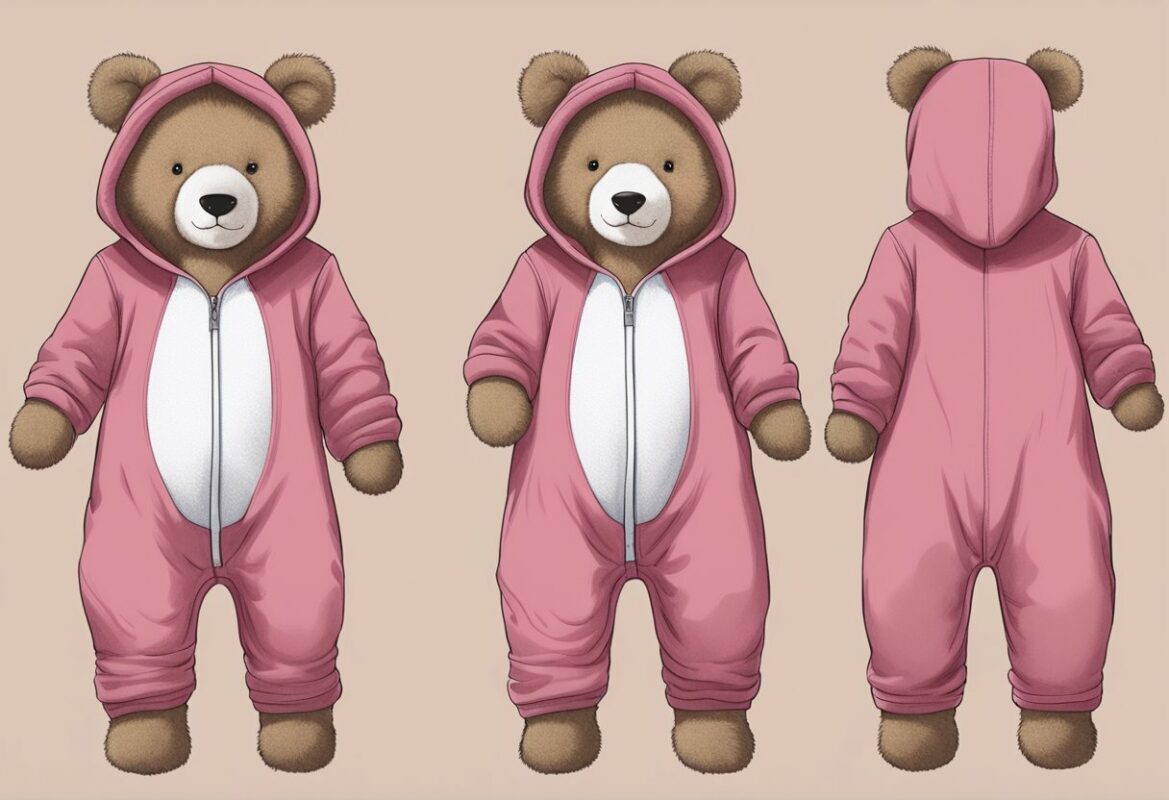Pajamas
How to Know If One Piece Is Too Small: Key Signs and Tips
Choosing the right size for a baby’s one-piece is crucial for comfort and ease of movement.
If you notice that snaps are difficult to close, or if red marks appear on your baby’s skin, the one-piece is likely too small.
Watching for these signs can make a big difference in keeping your baby comfortable and happy.
Key Takeaways
- A snug one-piece may leave marks on a baby’s skin.
- Check snaps and buttons; difficulty closing means it’s time for a new size.
- Choose stretchable materials for comfort and flexibility.
Babies grow quickly, and bodysuits that fit well one week might not fit the next. That’s why understanding the sizing of these garments is essential.
Ensuring proper fit not only ensures comfort but also allows for better movement and flexibility for your baby.
Navigating the world of baby clothing can be a challenge, but with the right tips, you can make more informed choices.
Look for bodysuits made from soft materials that allow for some stretch. This will ensure that your infant remains comfortable and isn’t restricted as they move.
Understanding One Piece Sizes
Choosing the right size for a one-piece is important for both comfort and style. This section covers why fit matters, the different styles available, and how to interpret size charts effectively.
Importance of the Right Fit
A well-fitting one-piece ensures comfort and freedom of movement. If it’s too small, it might feel tight and restrict motion.
A proper fit is especially important for babies, as they grow quickly.
Checking the length of the one-piece and ensuring it aligns with the child’s height can help in choosing the right size.
Snug bodysuits might look cute but could cause discomfort if not sized correctly.
Different Types of Bodysuits
There are several varieties of bodysuits, including footed and footless options.
Footed Bodysuits: These cover the entire body, including the feet, offering warmth. Ideal for colder climates or as sleepwear.
Footless Bodysuits: These leave the feet uncovered, offering more flexibility and comfort in various temperatures.
When choosing between these, consider the intended use and the climate. Different bodysuits may also have unique sizing requirements, so consulting available guidance can help.
Interpreting One Piece Size Charts
One Piece size charts can be a helpful tool when selecting the right size. They typically include measurements for chest, length, and weight.
It’s important to understand how to read these charts.
For example, a measurement from the back of the neck to the crotch can indicate overall length.
Consulting multiple charts may help, especially since brands may vary. This will provide a comprehensive understanding of different sizing conventions.
Measuring Your Baby
When choosing a one-piece for a baby, it’s important to take accurate measurements. Correct measurements ensure a good fit, which provides freedom for movement and comfort.
Pay special attention to the inside leg measurement and overall fit, as these are crucial for comfort and mobility.
Tools and Techniques
Measuring a baby requires a soft tape measure and a flat surface, like a changing table.
The baby should be calm and lying on their back for accurate results.
To begin, measure the chest by wrapping the tape measure around the widest part of the chest. It’s important not to pull the tape too tight.
Next, measure the hips at their broadest point.
Remember, the goal is to get precise measurements that will ensure comfort.
For ease of movement, consider taking these measurements with the baby dressed in a bodysuit or light clothing. This helps account for any extra room needed.
Having another person to help can make the process smoother and quicker.
Inside Leg Measurement
The inside leg measurement is essential for choosing a one-piece that fits well.
To measure this, place the end of the tape measure at the baby’s crotch. Extend it down to the ankle. Ensure the leg is straight for accuracy.
This measurement helps in finding bodysuits that are not too short, preventing them from riding up.
A proper inside leg measurement ensures that the one-piece will not restrict movement. Babies need freedom to kick their legs without discomfort. This is vital for their comfort and happiness.
Checking the Fit
After measuring, check how the chosen one-piece fits.
The one-piece should not be too tight.
Check the sleeves and leg openings. If these areas leave marks on the skin, the one-piece might be too small.
Ensure that the crotch area is not snug, as it could restrict movement.
Observe the baby’s behavior when wearing the one-piece.
If the baby seems uncomfortable or fusses, the fit may need adjusting.
Look for signs like red marks or difficulty in moving around.
A well-fitting one-piece should allow for some room yet not be overly baggy.
Signs That a One Piece Is Too Small
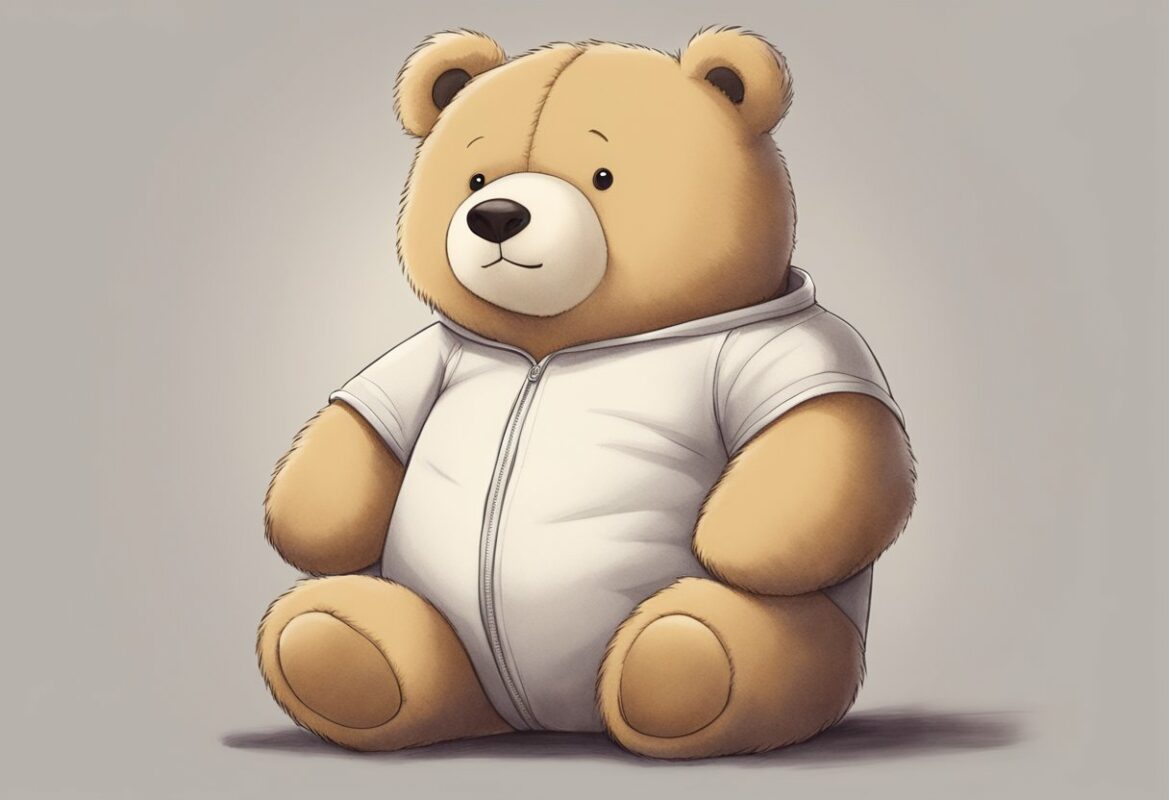
Choosing the right size for baby bodysuits is crucial for comfort and practicality. Some key signs that a one-piece may be too small include a snug fit around the neck and shoulders, difficulty with diaper changes, and limited mobility.
Snug Fit Around the Neck and Shoulders
A one-piece that is too small will often fit tightly around the neck and shoulders. This can cause red marks or irritation on the baby’s skin, which is uncomfortable.
Parents should check if the fabric is stretched tightly and if the snaps or buttons at the neckline are difficult to close. If the one-piece pulls at the seams when fastened, it is likely too small.
Ensuring there is slight room to slide a finger between the fabric and skin helps to confirm the right size.
Difficulty with Diaper Changes
Difficulty in changing diapers is another indicator of a one-piece being too small.
If the fabric is too tight, it can make unsnapping and snapping the one-piece a challenge during diaper changes.
Efficient changes are crucial, especially when dealing with a fussy baby.
If parents notice that they struggle to loosen or re-secure the bottom snaps due to tightness, it may be time to size up.
Comfortable bodysuits should allow for easy access without causing stress or tears in the fabric.
Limited Mobility and Discomfort
Babies need room to move their limbs freely. A small one-piece can restrict movement, causing fussiness and discomfort.
It may limit how the baby stretches their arms or legs, making it difficult to roll over or sit up as they grow.
Watch how the baby moves in the one-piece; any signs of restriction can indicate that the clothing is too tight.
Babies often show signs of discomfort by squirming or fussing when their movement is limited by clothing.
Opting for a one-piece with a more relaxed fit can improve comfort and allow for natural growth and development.
Selecting the Right Material
Choosing the right material for a one-piece is crucial for ensuring comfort and practicality. The fabric should be soft, breathable, and easy to clean, making it suitable for both babies and adults.
Proper materials provide warmth while allowing skin to breathe, enhancing comfort and usability.
Breathable Fabrics for Comfort
Breathable fabrics are essential for maintaining comfort, especially if the one-piece is worn for extended periods.
Cotton is a popular choice for baby clothes due to its softness and breathability. It helps in regulating body temperature by allowing air to circulate, reducing the risk of overheating.
Bamboo fabric is also a great option, known for being thermoregulating and soft, perfect for those with sensitive skin.
These qualities make both materials excellent choices for ensuring comfort.
The breathability of these fabrics keeps the skin dry and comfortable, making them preferred options for baby clothing.
They suit not only babies but also adults who prioritize comfort and skin health in their sleepwear.
Durability and Washability
When selecting a one-piece, durability and washability are significant considerations.
A one-piece should withstand frequent washing without losing its shape or softness.
Cotton is a durable fabric that holds up well over time and retains its softness, making it ideal for baby clothes that require regular cleaning.
It’s important to check care labels and follow washing instructions to maintain the quality of the material.
Fabrics like cotton typically resist wear and tear, even after numerous washes.
Choosing durable materials ensures that the one-piece remains a comfortable and practical garment, whether for sleeping or everyday wear.
This makes it a reliable choice for anyone looking for long-lasting baby clothes or adult pajamas.
Shopping Tips for Bodysuits
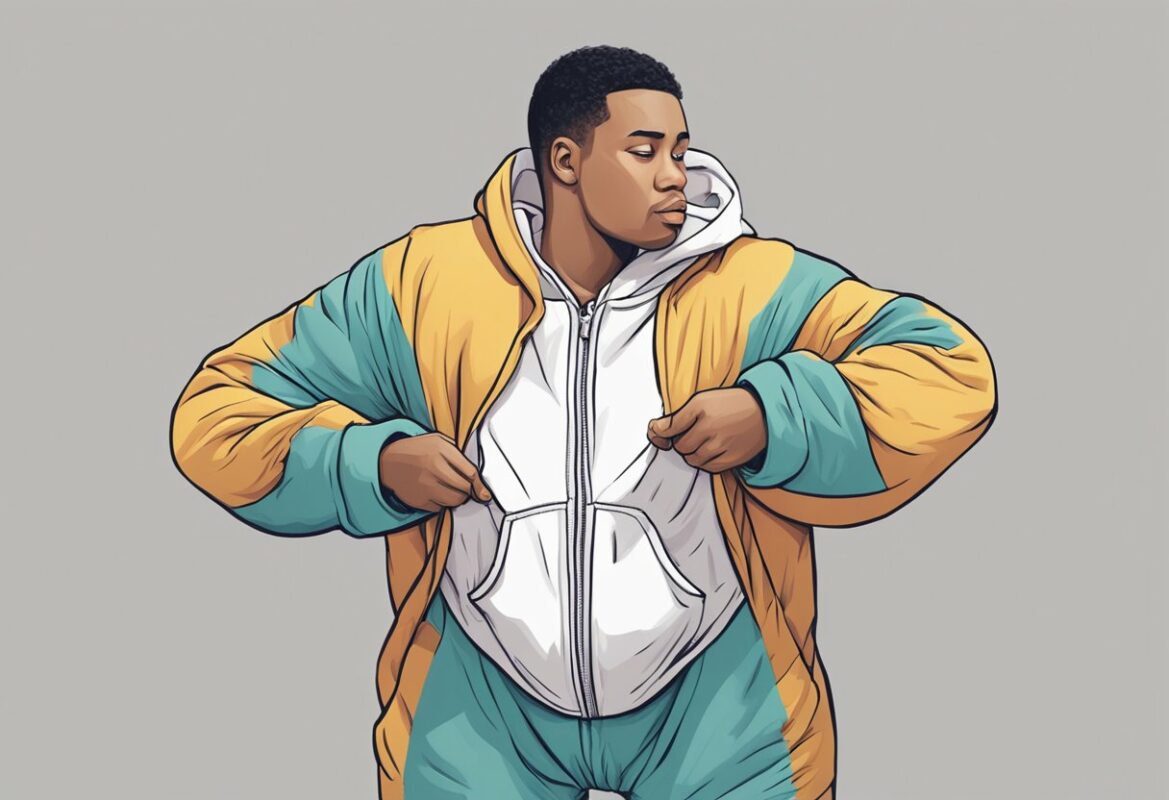
When buying bodysuits, it’s important to consider brand reputation, accurate sizing, and convenient features. These elements ensure that the clothing not only fits well but also meets practical needs.
Comparing Brands and Quality
Quality differs significantly between brands like Gerber, Baby Gap, and Carter’s.
Gerber bodysuits are known for their affordability and basic quality, ideal for everyday wear.
Carter’s offers a wide range of stylish options with soft fabrics, while Baby Gap is often praised for its premium materials and durability.
Choosing the right brand can depend on your priorities, such as budget or style preferences.
Checking online reviews for real-world feedback can give extra insight into how well these bodysuits hold up over time and washes.
Navigating Size Guides
Understanding size guides is crucial for buying the right fit.
Bodysuits are typically sized by age, such as “3-6 months” or “12-18 months,” but infants grow at different rates.
Measure your baby‘s height and weight to compare against the brands’ size charts.
Gerber’s sizing might differ from Carter’s despite having similar age labels.
If your baby is between sizes, opting for the larger size can provide more comfort and room for growth.
Some stores also provide information on how the bodysuits fit based on feedback from other parents.
Convenience Features
Convenience features play a big role in the daily use of bodysuits.
Snaps at the crotch make diaper changes quick and easy.
Some bodysuits come with expandable shoulders to slide over a baby’s head effortlessly. Others might have zippers instead of snaps for faster dressing.
Tagless labels also prevent irritation on delicate skin.
These small details often enhance the practicality and comfort of the one-piece, making daily life much easier for parents.
When to Size Up
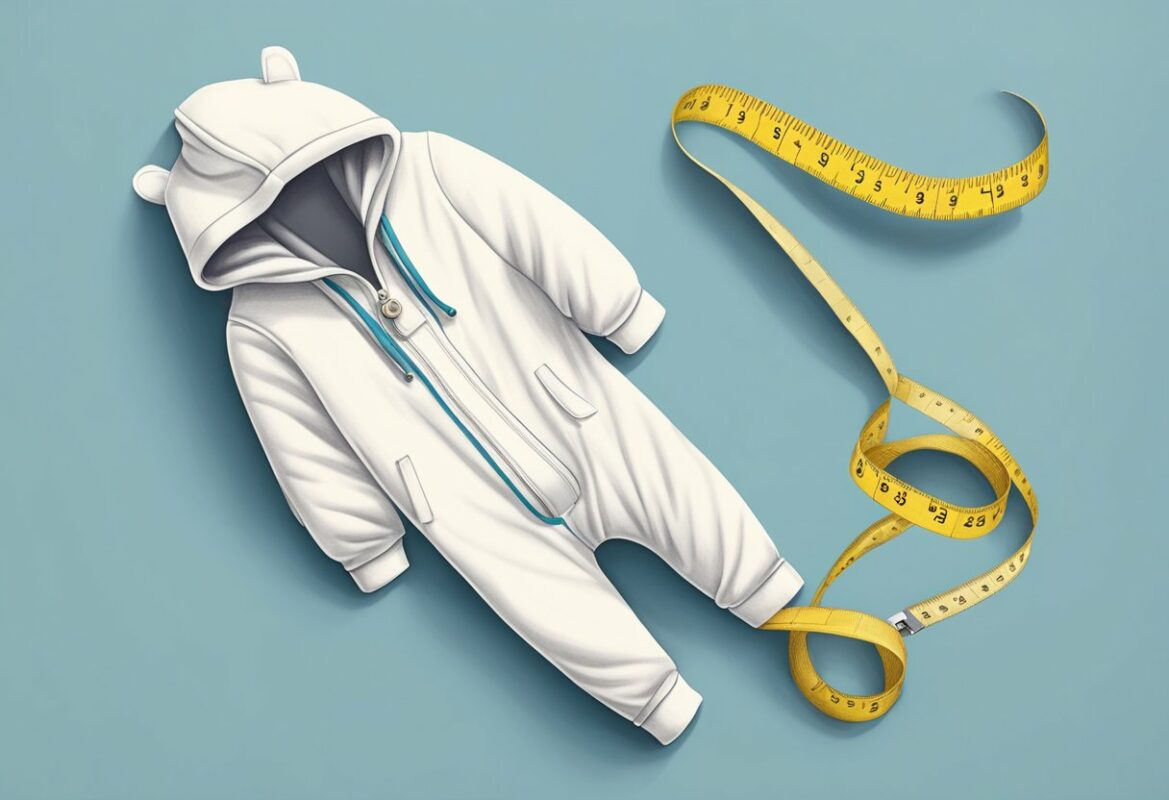
It’s important to know when it’s time to size up a one-piece for a baby. Growth and changing seasons can affect when a new size is needed.
Growth Considerations
Babies grow very quickly, especially in the first few months. This means their clothing, including bodysuits, needs to keep up.
If the fabric is stretched tightly around the baby’s body, it might be time for a larger size.
Watch for signs, like when snaps at the bottom become difficult to fasten.
If the one-piece leaves red marks on the baby’s skin, it may be too tight. Another sign is when the baby’s feet or hands start to stick out from the ends.
Parents should remember that babies wear a range of sizes due to different brands having varying fits.
Trying a size up may provide more comfort without waiting until the current size no longer fits.
Always keep a couple of spare bodysuits in larger sizes to be ready for sudden growth spurts.
Seasonal Adjustments
Seasons also affect how bodysuits fit. During colder months, a slightly larger one-piece may be needed to fit comfortably over other clothes. Consider sizing up to accommodate these extra layers.
In warmer weather, lightweight and breathable bodysuits are popular. If the baby seems uncomfortable or too warm, a larger size made from a breathable material might help. Moreover, summer outings can sometimes lead to rapid growth, and sizing up bodysuits can ensure comfort during outdoor activities.
Caring for Baby Bodysuits
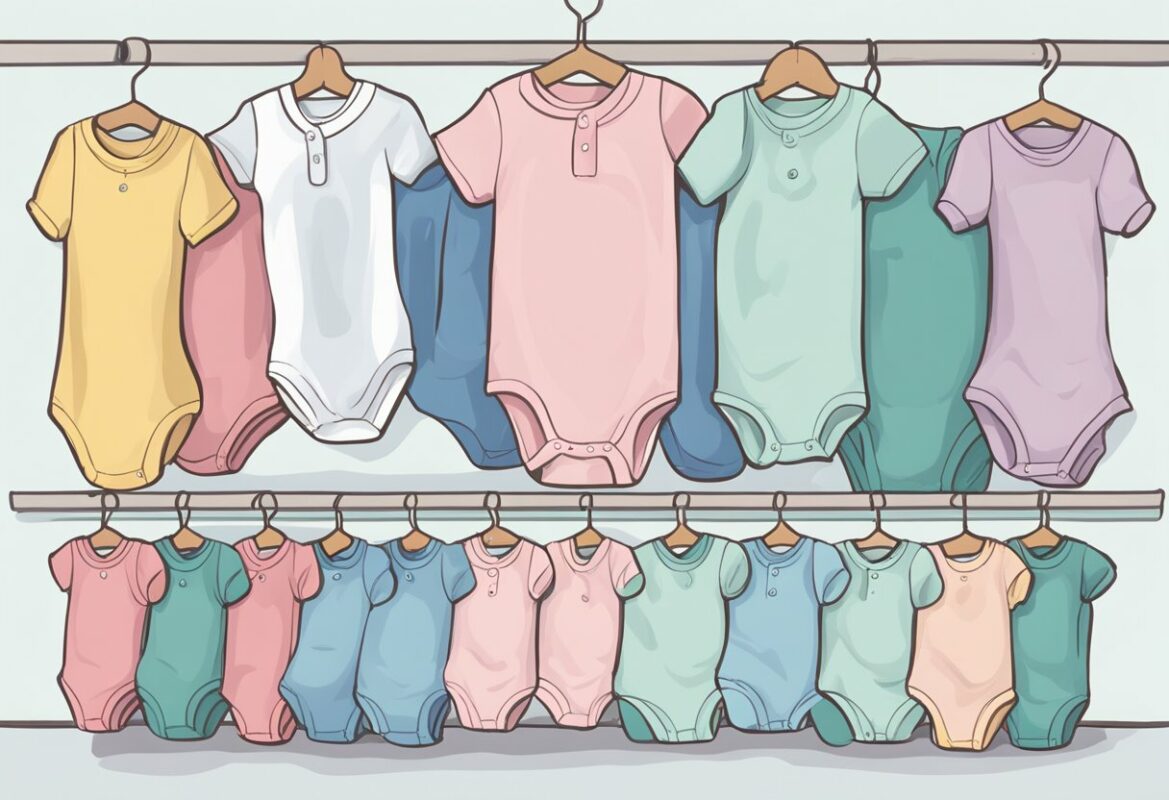
Keeping baby bodysuits clean and well-maintained prolongs their lifespan and ensures your baby stays comfortable.
Proper Laundry Techniques
Baby bodysuits should be washed with care to preserve their softness and color. Use a gentle, baby-friendly detergent to avoid irritation on sensitive skin.
Choose cold or warm water settings on your washing machine to prevent shrinking and fading.
Use a mesh laundry bag to protect delicate fabrics during the wash cycle. This is especially useful for bodysuits with snaps or buttons.
Avoid harsh chemicals such as bleach or fabric softeners, as these can damage the fabric and irritate the baby’s skin.
Allow bodysuits to air dry when possible. If using a dryer, select a low heat setting to minimize wear and tear. For swaddles and bodysuits, this method helps maintain their softness and prevents shrinking.
Storage and Maintenance
Proper storage of baby bodysuits and bodysuits ensures they remain in good condition. Fold them neatly to avoid wrinkles and preserve their shape.
Use drawers or a designated storage bin to keep them organized and easily accessible.
Store bodysuits in a cool, dry place to prevent mildew and musty odors. For long-term storage, consider using vacuum-sealed bags to save space and protect from dust and pests.
Regularly inspect bodysuits and bodysuits for signs of wear, such as loose threads or damaged snaps. Promptly repair them to prevent further damage. This ensures that they remain safe and comfortable for your baby to wear.
Frequently Asked Questions

Parents often wonder how to ensure their baby’s clothing fits just right. This section addresses common concerns about one-piece fit, helping to identify if a one-piece or other baby clothing might be too small. Understanding when to size up is crucial for comfort and mobility.
How can I tell if a one-piece is too tight for my baby?
A one-piece might be too tight if it leaves marks on the baby’s skin or appears to limit movement. If it seems difficult to snap or stretch, it is worth considering a larger size.
Clothes that fit well should allow the baby to move comfortably without irritation.
What signs indicate that a footie pajama is too small?
Footie pajamas that are too small may cause feet to be cramped or bent unnaturally. Look for signs like difficulty in zippering or snaps popping open. When baby’s toes seem squeezed, it’s time to try a bigger size.
What are the indicators that my toddler’s one-piece does not fit properly?
If the one-piece is too small for a toddler, it might pull at the shoulders or create a short, snug fit around the diaper area. Pay attention to any complaints or discomfort your toddler might express, as they are often good indicators.
When should I size up my baby’s clothing?
Sizing up is needed when clothes leave marks, are challenging to put on, or limit movement. Babies grow quickly, so checking fit regularly is important. If the current size doesn’t easily accommodate a diaper or seems tight, it’s time to go up a size.
How do I determine the proper fit of baby pants?
For baby pants, make sure they allow for flexible movement and do not dig into the waist or thighs. Pants should be easy to put on and remove. A good fit means they should sit at the waist without leaving red marks.
What should I do if size 0-3 months is too small but 3-6 months is too big for my baby?
When in-between sizes, consider using adjustable clothing or brands with overlapping size ranges.
Some companies offer stretchy materials that can bridge the gap. Rolling sleeves and cuffs can also help adapt bigger sizes temporarily.

